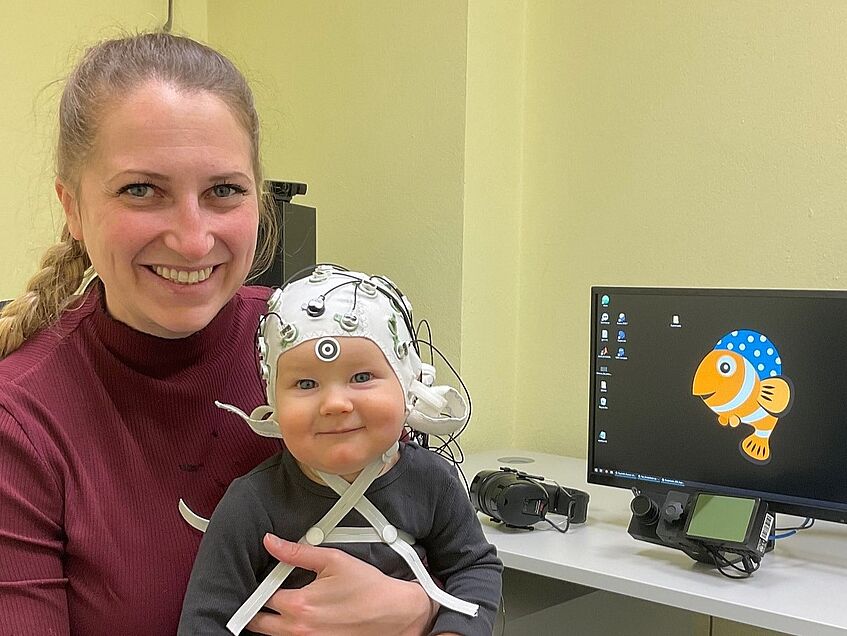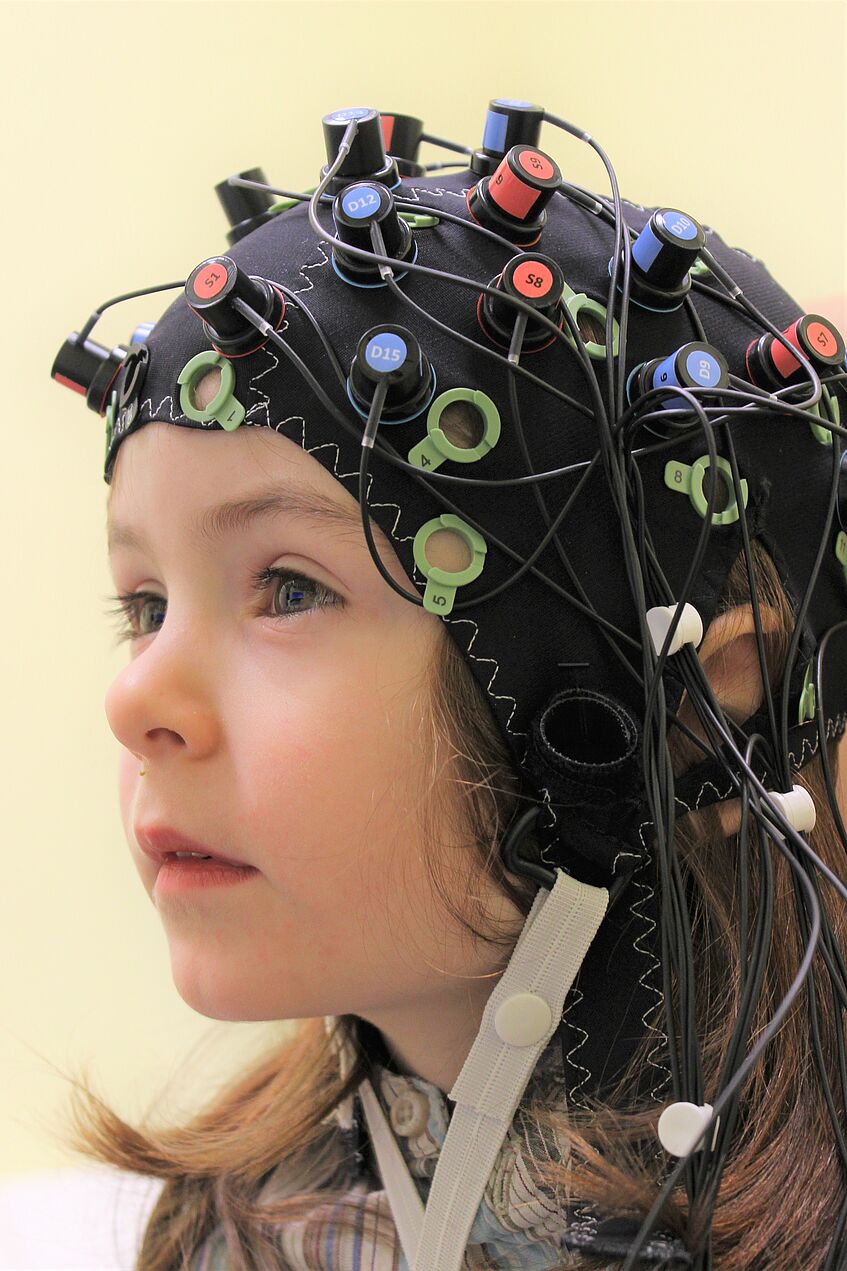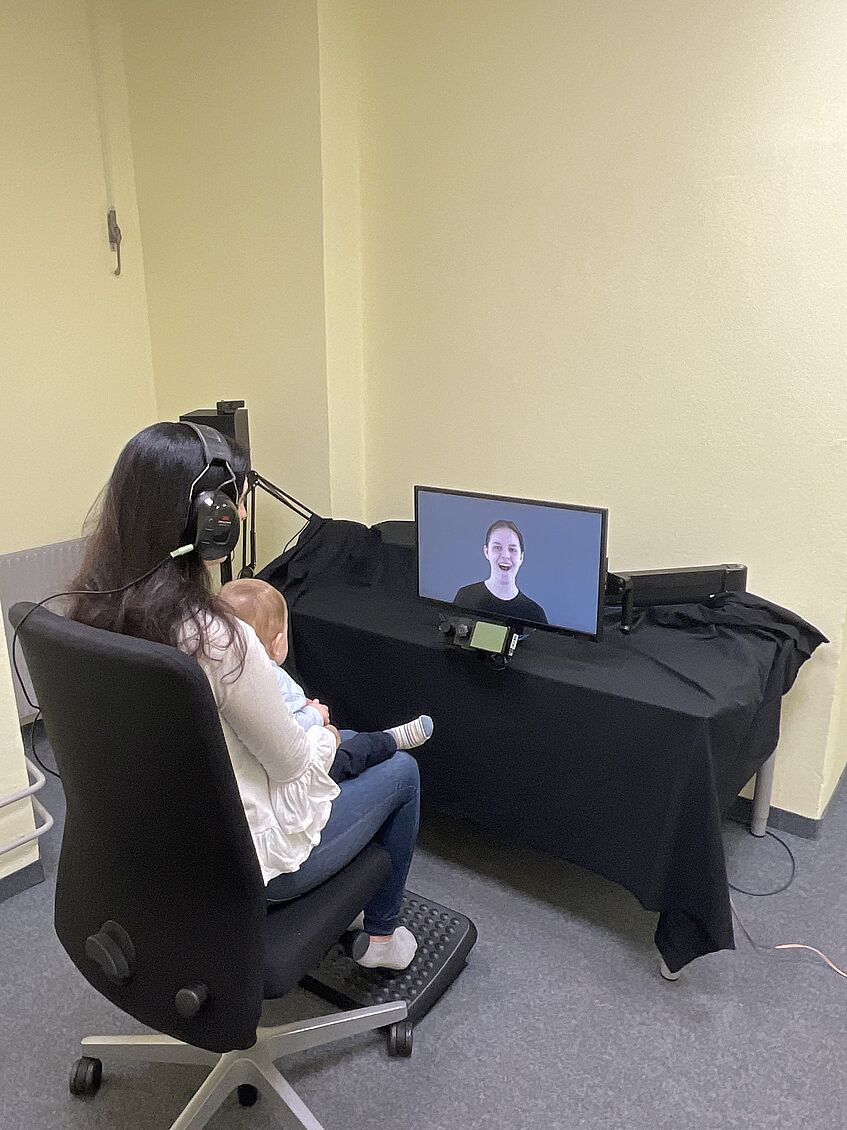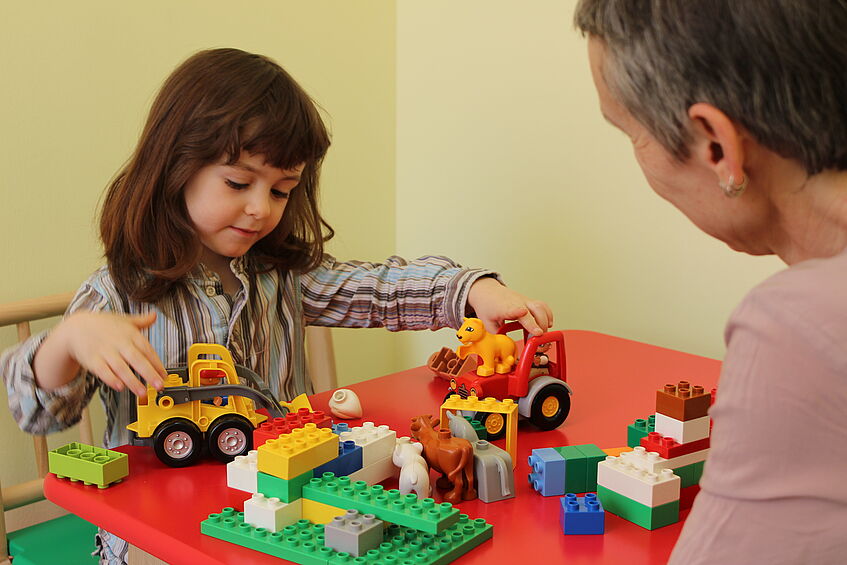Which methods do we use for our research?
Babies cannot yet tell us how they see the world. Therefore, we use various methods that are completely stress-free and harmless for you and your child to get an insight into the little one's mind. Both the neurophysiological methods (EEG and fNIRS) and the behavioral measurement methods (e.g. eye-tracking) have been widely used in research for many years and do not pose any risk.
You will always be present during both preparation and testing procedure and most of the time, your child will sit in your lap. For some studies (EEG and fNIRS), your child will wear a cap on its head, which enables us to monitor the ongoing brain activity. All methods applied are completely safe for you and your child and bear no risk. The testing itself, during which linguistic input and/or pictures will be presented to your child, only takes a few minutes.
Measurement of electrical brain activity (EEG):
Electroencephalography (EEG) is a method which allows us to record the very small electric currents which naturally occur during all cognitive processes (speech comprehension, learning, remembering, sleeping). During the EEG measurement, your child wears a flexible cap embedded with electrodes on its head. In the meantime, we present your child for a few minutes with linguistic input (e.g. spoken words or sentences), pictures or sounds. This way, we can observe changes in the ongoing brain activity and draw conclusions about how the brain perceives, processes and remembers these signals.


Measuring brain activity through oxygenation (fNIRS)
For the fNIRS method (functional near-infrared spectroscopy), your child will wear a cap much like in EEG testing. So-called optodes are embedded into the cap: they are like little flashlights sending infrared signals. These optical signals are then recorded by another set of sensors embedded in the cap. This approach shows us where in the brain oxygen is currently being used, i.e. which brain areas are being activated while hearing or looking at different input.
Measuring gaze and pupil size
For the eye tracking method, we record gaze and pupil size of your child with the help of a camera which is installed on the edge of a computer screen. Pictures and symbols are presented on the screen and words or sentences are played via loudspeakers. With this technique, we can find out how children and adults use information obtained through language to direct their attention and make predictions.


Assessment of linguistic and cognitive development
To complement our above mentioned research methods, we apply standardized questionnaires and assessments for linguistic and cognitive development suitable for your child's age. We playfully determine your child's development in different areas such as motor skills, language or cognitive ability. This additional information helps us look at language development not in isolation, but in interaction with other developing (cognitive) abilities.
